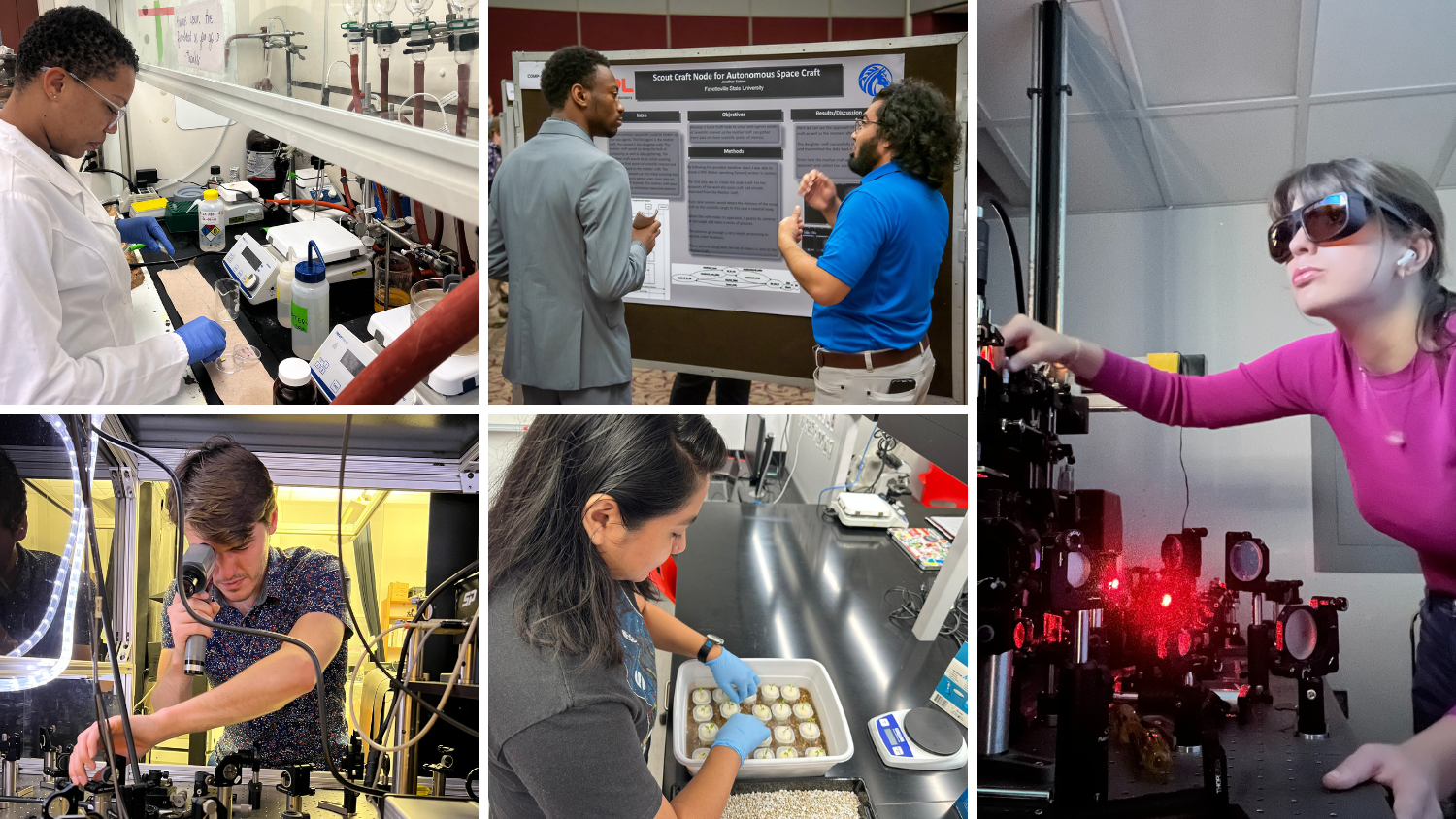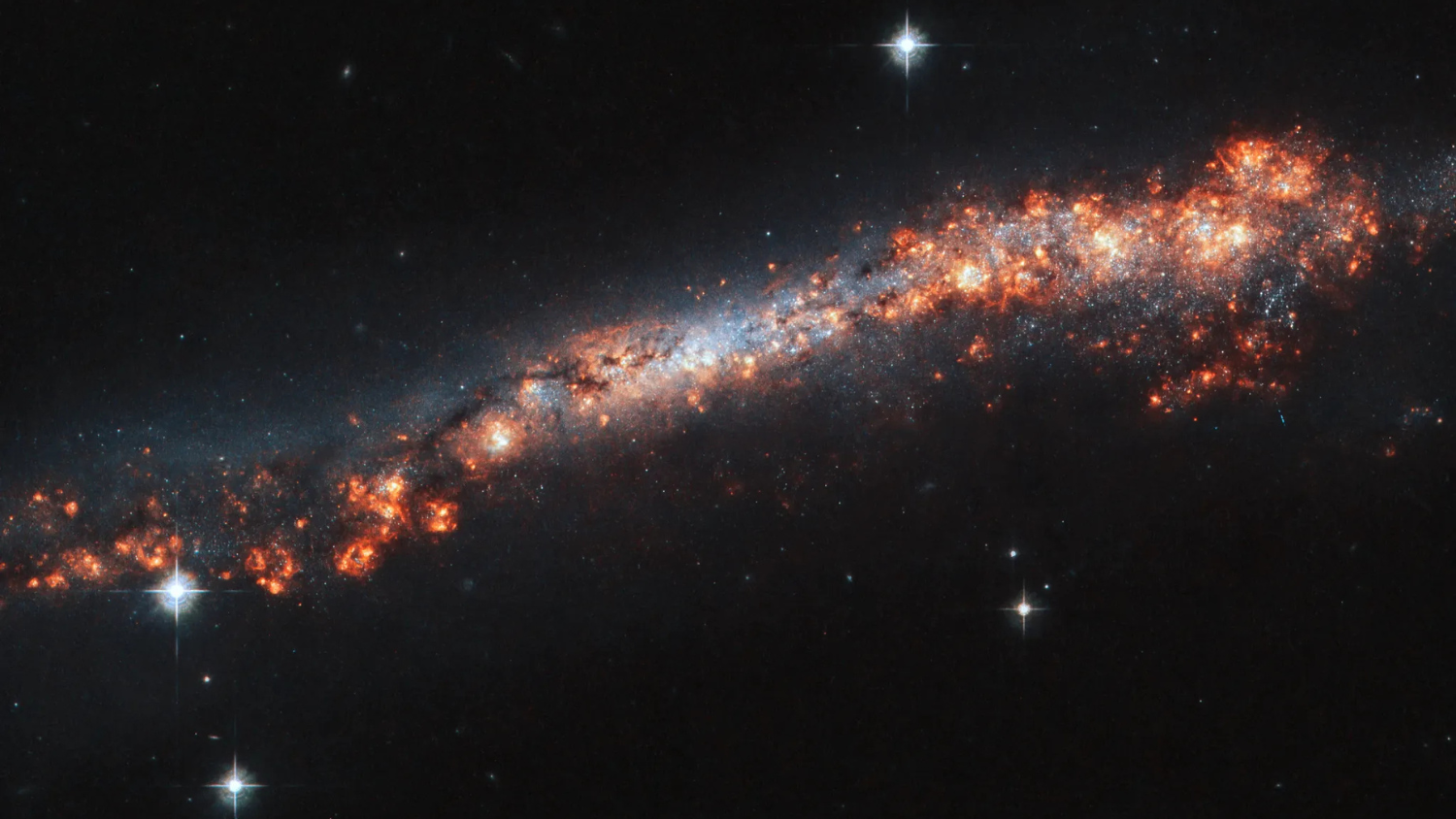Catching Up with Stephanie Smith, ULA Engineer, on Mars 2020 Project
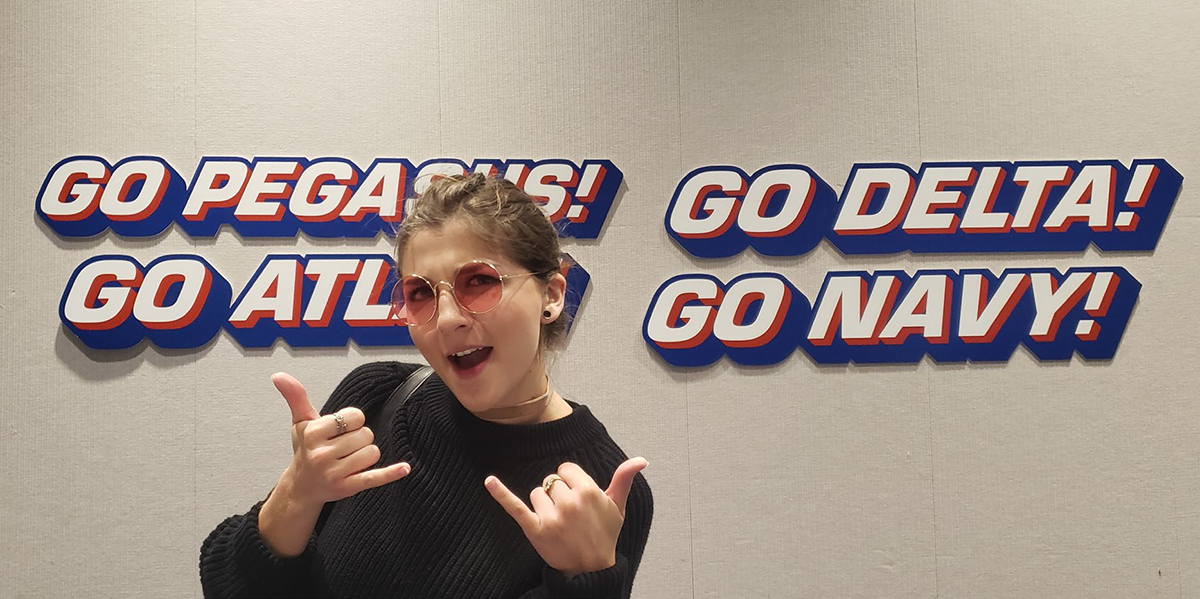
Q&A with a 2015 NC Space Grant Scholar
A 2015 scholar takes a break to talk with NC Space Grant about her job at United Launch Alliance (ULA), how she contributed to the Mars 2020 mission, and the recent launch of the Mars Perseverance rover aboard her company’s Atlas V rocket. After graduating high school Smith attended Sandhills Community College in Pinehurst. She then went on to NC State, graduating in December 2018.
NC Space Grant: Congratulations on the successful launch of Perseverance on the ULA Atlas V rocket! So, last time we talked, you were about to begin your role at United Launch Alliance and now you’re about a year and a half into your career.
Stephanie Smith: You are right, I am still with ULA and watched the launch from just a couple miles from the pad, feeling the ground rumble beneath me!
NCSG: So exciting! So how has the role turned out? What do they have you doing?
Smith: I am a contamination control engineer. My team ensures that the spacecraft’s exposure to micron-scale particles and molecular contamination is minimized. Molecular films that are 1/100th as thick as can be seen by the human eye, can cause spacecraft to overheat, resulting in a shorter life for spacecraft electronics. Solar arrays, optics and other science instruments are degraded by both molecular and particle contamination. We are also responsible for Planetary Protection, so for Mars 2020 we focused a lot on biocontamination and making sure microbes were not hitching a ride to Mars. Spacecraft instruments are sensitive to contaminants and must be kept clean in order to achieve mission success.
NCSG: We heard a lot about those considerations in the pre-launch and post-launch press conferences. So, why is it so important to keep the lander and rover from taking germs to Mars?
Smith: The Perseverance rover will be searching for signs of ancient life on Mars and will collect rock and soil samples to return to Earth. If microbes make it to Mars, it will be difficult to tell what is native to Mars versus what the spacecraft brought with it from Earth. It is also important to make sure that Mars’s natural environment is preserved and uncontaminated, so future research can be conducted.
These Planetary Protection considerations are globally accepted. The Outer Space Treaty is an international organization that establishes rules for research on extraterrestrial planets; Planetary Protection is among those regulations. So Planetary Protection does not only apply for the Perseverance mission, but for any mission conducting research on extraterrestrial bodies that could have the potential to support life, or could have had potential to support life in the past.

NCSG: It must have been awesome to work directly on the rocket! Sounds like you have a lot of variables to consider, though.
Smith: Contamination Control comes in to play before the rocket hardware is even manufactured. We work with all of our ULA team throughout design, manufacturing, and launch to make sure our hardware is cleaned and maintained clean so that it does not contaminate the spacecraft and ultimately Mars.
Over the past few months, the team and I worked to make sure the Atlas hardware met the mission biocontamination requirements – this meant lots of cleaning and sampling. There are more microbes and microbial spores in the outside air and on everyday surfaces than one would think. This is why all operations involving ULA hardware that take place near the rover were performed in extremely controlled environments – clean-room suits, air filtration and material control are the kinds of things a contamination control engineer considers when launching a spacecraft.
NCSG: What are some of the methods you and the team use to clean that molecular contamination off?
Smith: There were a number of methods used depending on the materials involved and the level of cleanliness required. This could range from washing or wiping hardware using very pure and concentrated solvents to vapor hydrogen peroxide cleaning.
NCSG: Have you been working on Mars 2020 the whole time you’ve been with ULA?
Smith: I worked on Mars 2020 starting in the summer of 2018 as an intern, then continued working this mission (along with others) since I started ULA full time in 2019. So yes, the whole time! This mission was one of my personal favorites to work on.
NCSG: This must have been an especially exciting day for you and the entire company!
Smith: It sure was. It takes a team to launch a rocket. There are many different groups focusing on specific technical responsibilities, but through communication and teamwork, we are able to identify how each group fits into the big picture and operate accordingly to make each mission successful. Thankfully, ULA is a great company with lots of experience and 100% mission success. Perseverance marked our 140th successful mission!
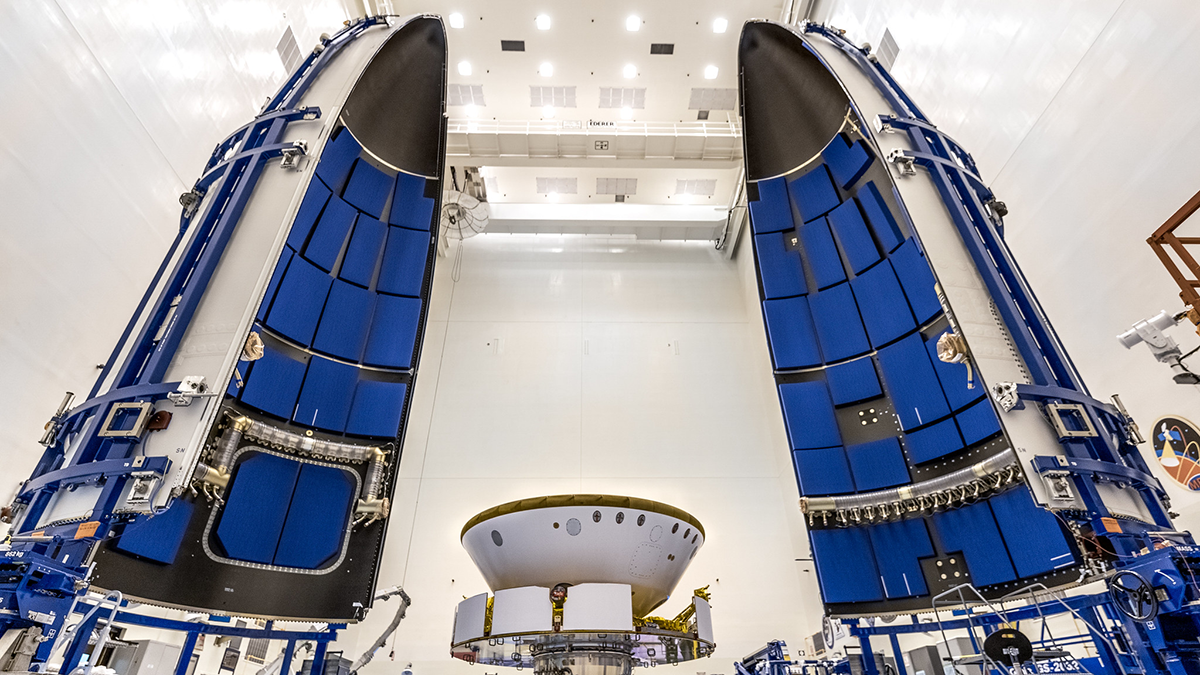
NCSG: Is there any follow-up monitoring of the Mars 2020 mission, or is it on to the next project?
Smith: ULA’s role is anything from design, manufacturing, processing and launching the rocket, but the spacecraft belongs to our customer, so as soon as the spacecraft separates from our rocket, the ULA contamination control work is complete. JPL takes it away from there.
NCSG: Can you share what the next project you’ll be working on, now that Perseverance is safely on its way to Mars?
Smith: Sure! I will be working on contamination analyses and launch operations for a number of upcoming Atlas V and Delta IV launches including NASA’s Lucy Mission that will study the Trojan asteroids, Europa Clipper that will investigate one of Jupiter’s moons, and National Reconnaissance Office (NRO) national security launches. ULA is also developing the Vulcan Centaur rocket that will have its inaugural flight in 2021. I have been working on developing requirements for the new line of Vulcan Centaur rockets.
NCSG: What excites you most about your upcoming projects?
Smith: I’d say I am most excited to see the first flight of the Vulcan Centaur. The Vulcan Centaur rocket takes the best features of Atlas and Delta and melds them into one, to create an even more capable and more powerful rocket.
The contamination analyses are exciting because we get to predict where all of the molecules that escape from non-metals in a vacuum – as well as adsorbed organic molecules on metal surfaces – will deposit on the spacecraft to ensure that contamination-sensitive scientific instruments will work properly on orbit. It is quite an undertaking!
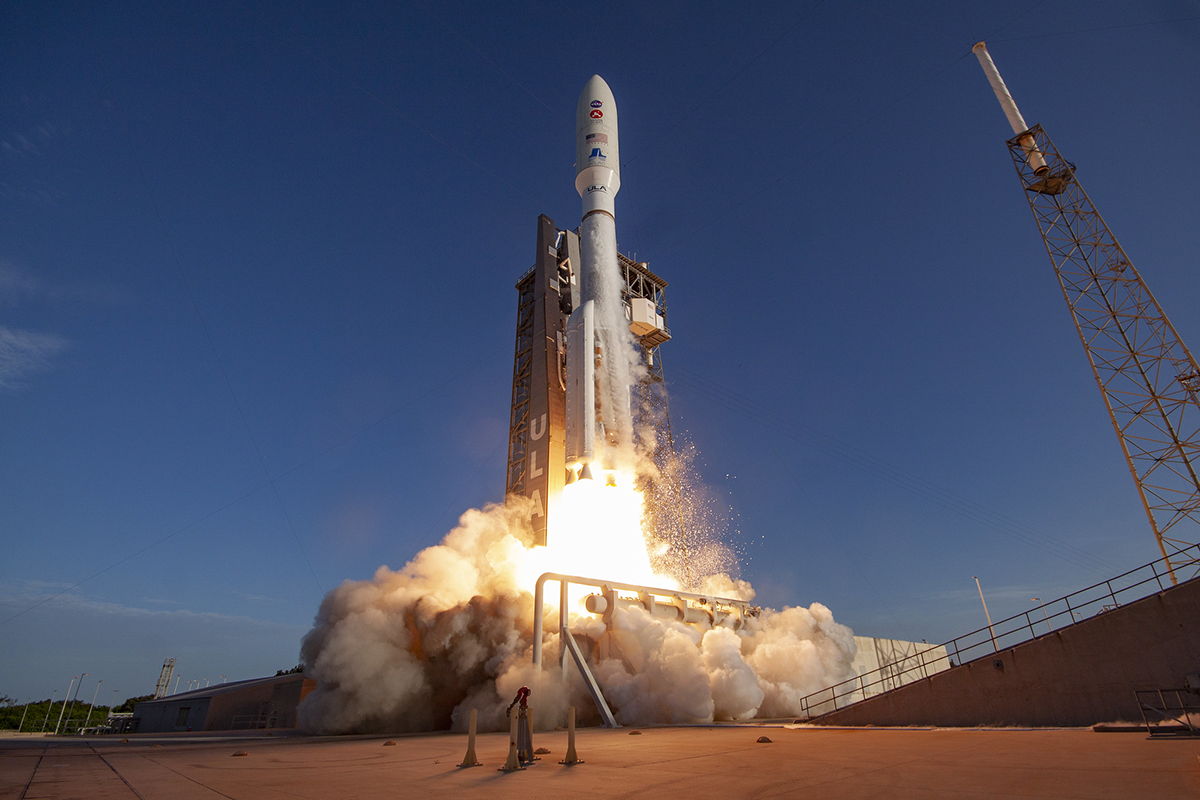
NCSG: Were there any particularly memorable moments or really valuable lessons you learned while working on the Mars 2020 project? Or both?
Smith: A very memorable moment was standing next to the rover for the first time. The Perseverance rover is a marvel. This incredible piece of engineering launched out of Earth’s atmosphere and will travel 300 million miles at about 24,600 mph to make it to Mars, where it will search for ancient life and demonstrate technology that will pave the way for future robotic and human exploration of the planet.
I have learned so much in my first year of working in the aerospace industry and I continue to learn more every day. The Mars 2020 mission is unique compared to the other missions I have worked on. When we launch spacecraft into orbit around the Earth, there are no Planetary Protection requirements to abide by. Mars 2020 incorporated a number of requirements and cleaning techniques that I had not seen before. However, I was able to leverage my understanding by learning from my teammates who worked on the Insight and Mars Science Laboratory missions.
NCSG: Any tips or advice for students or early career professionals interested in space-related careers like yours in the future?
Smith: Apply to as many jobs as you can. There are many aerospace companies out there doing all sorts of cool work!
NCSG: So, here at NC Space Grant, things look pretty different because of the COVID-19 pandemic, just like at most places around the world. Have things changed a lot at ULA, or is it business as usual plus masks?
Smith: Every site is a bit different. Engineers in our headquarters office in Denver, Colorado work almost entirely from home. At our factory in Decatur, Alabama we have many technicians building and manufacturing the rockets abiding by COVID-19 protocols. Here in Cape Canaveral, we work from home whenever possible. I work from home 90% of the time, due to the nature of my job. Some groups with more hands-on work are functioning as usual, but following COVID-19 protocols closely such as wearing masks, social distancing, limiting attendance and continual cleaning.
NCSG: Good to hear you’re keeping safe and distanced. Thanks for chatting with me!
Smith: Thank you for reaching out, Lee! I am always happy to chat.
Read more about Stephanie Smith’s journey into her space career with ULA in our previous post here.
- Categories:
